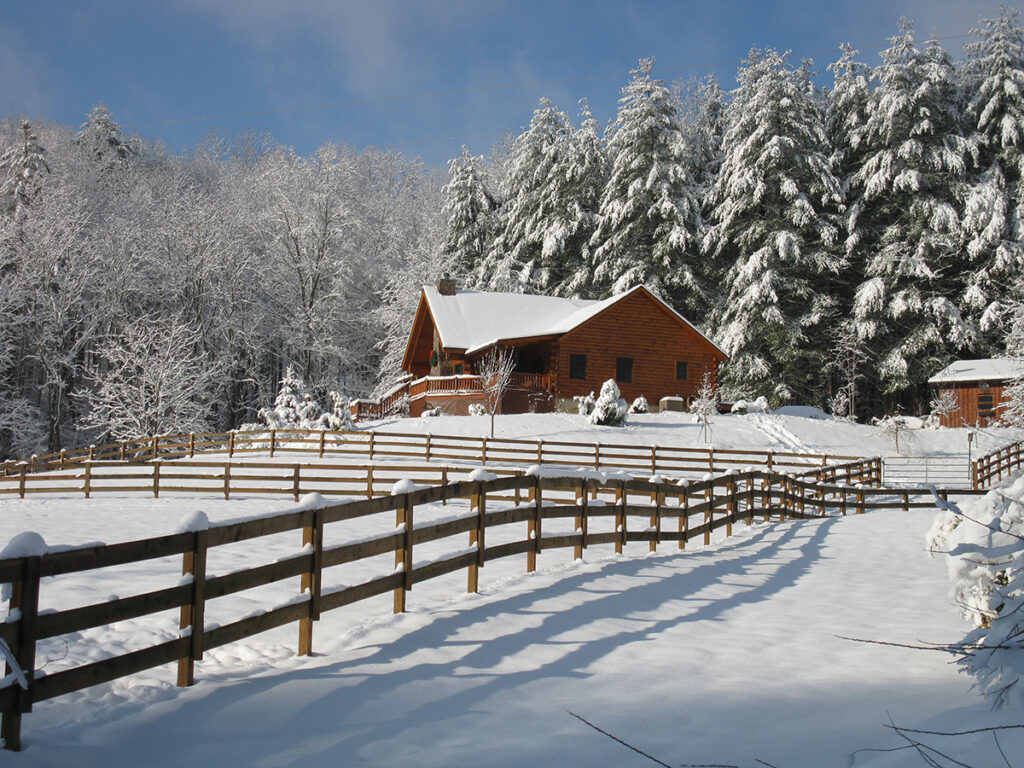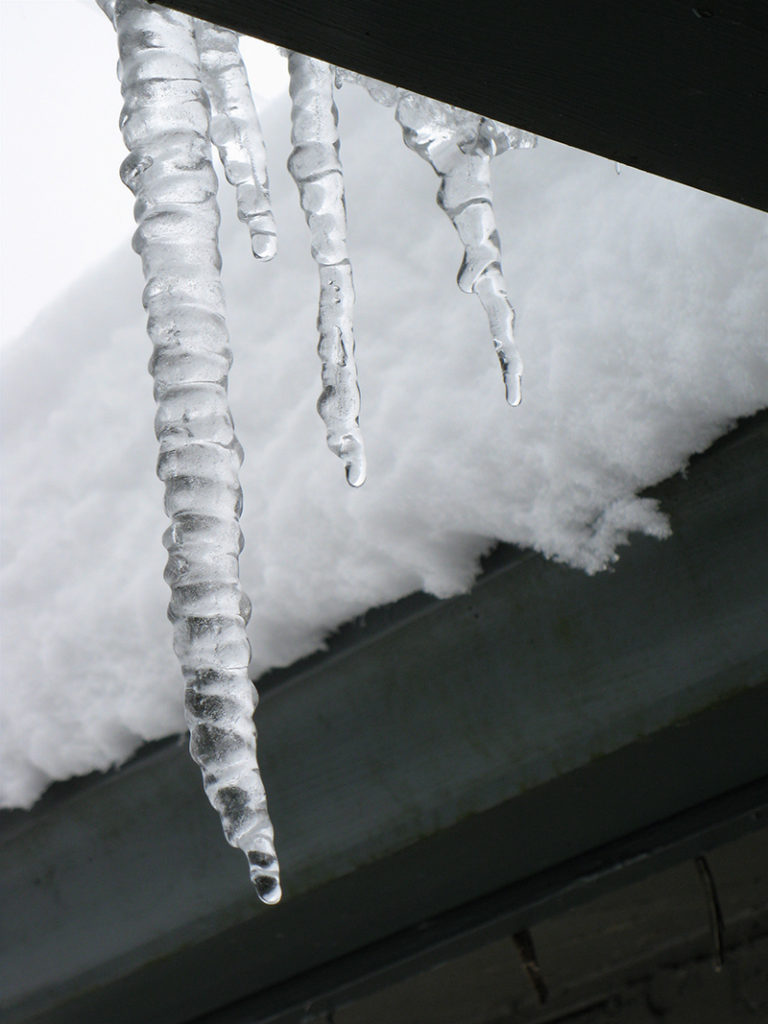
Photo by Hank Eder
Winter in the Western North Carolina mountains has a charm all its own, and a wide range of temperatures throughout the season. Crisp winter days, where the mercury hovers in the 40s, with robins-egg-blue, cloudless skies can swiftly give way to postcard-perfect snow dumps of a foot or more. Time to pull out the old snowboard, inner tube, or sled!
Frosty winter fun has a more serious side when you consider what it can do to unprepared homes. This is definitely a proving ground for that old “ounce of prevention” proverb. In 2021, a record-breaking $15.1 billion worth of insured losses were the result of winter storms, with much of the damage attributable to burst pipes. This type of damage is preventable with proper maintenance and precautions.
Check out this infographic about the effects of winter damage to homes.
Let’s take a look at 10 winter tips that can protect your home from damage during cold weather.
1) Winter’s bursting out all over!
Here’s a surprising statistic: The lion’s share of winter insurance claims are linked to frozen and burst pipes. If your pipes burst and flood your home, expect at least $10,000 to $20,000 in repair costs. The kicker is that armed with a bit of foreknowledge, you can prevent the damage.
Here’s what you can do:
Use pipe insulation in areas with exposed pipes, such as under sinks, in crawl spaces, in attics, and on pipes that run along exterior walls. And don’t forget basements, where 37 percent of burst pipes are said to occur.
Pipe insulation is easy to install and costs as little as 50 cents per linear foot. You can find it in most hardware stores and big-box home stores.
Pay careful attention to pipes under kitchen sinks that adjoin an outside wall. In addition to covering them with pipe insulation, leave your cabinets open on really cold nights to let warmer air from the house help warm the pipes. For added protection, you can leave a drip of water running through the pipes. It helps if you keep your home’s thermostat set to 65º or higher.
2) Check heaters, fireplaces, furnaces, and chimneys before use
Fireplaces, heaters, and chimneys are a major cause of home fires during the winter. Have them professionally inspected annually, before the start of the cold season. Be sure to ask the inspector to check out your brick chimney or stovepipe to ensure all is in good working order.
Also, now is the time to replace the batteries in your smoke detector and your carbon monoxide detector. If you don’t have a carbon monoxide detector, get one! It might just save your life.
3) Insulate your attic and crawlspace
Keep heat in your home where it belongs, and not in your attic or crawlspace. Heating your attic in winter poses a greater problem than just higher heating bills. Rapid thaw and refreezing of snow on the roof can cause ice dams, which can cause costly damage to your roof and eaves.
How much insulation do you need? This varies by region and temperature. Here’s a handy insulation guide from Energy Star to give you more insights.

Get your mind into the gutter!
What comes before winter? Why, fall of course! Falling leaves in autumn can clog up your gutters. Water backups can freeze once temperature plummets, and then melting snow can’t pass into your downspouts. Clean out those gutters and downspouts as fall nears its end to keep water flowing down.
5) Check for damaged roof shingles
Snow weighs heavily upon your roof – about 25 pounds per cubic foot. That kind of pressure lets water find its way through loose or missing shingles to flow down into your home. If you can’t do the inspection and repairs safely yourself, get a licensed roofer check it out and make any fixes before the first snow.
6) Any port in a storm (window)
If you have storm windows, it’s time to remove and store your screens, swapping them out for your storm windows. If you don’t have storm windows, consider getting some. They provide an insulating layer of air between your windows and the frigid outdoors, and they also add protection again driving rain and snow during heavy storms.
7) Time for a trim
Trim back tree branches that hang over or touch your roof. Keep a careful eye out for dead branches. Heavy snow can snap dead branches, causing costly damage if they hit your roof or siding. If you’re unsure about what to do, get a reputable tree service to come out and remove any questionable limbs.
8) Stone cold
Notice any loose stones on steps, paths, or patios? Fix them now, because they’ll only get worse over the winter. The natural freeze and thaw cycle of the soil is called “frost heave,” and it will further dislodge those loose stones. Reset those stones before the cold really sets in.

Photo by DDP on Unsplash
9) Mark your paths
With a foot or so of snow on the ground, you’ll lose track of where walkway, driveways, and garden beds begin and end. Mark your paths clearly with driveway markers or fiberglass poles to delineate these areas to help with snow blowing, shoveling, or plowing.
10) Protect outdoor water sources
Drain and stash your hoses before a deep freeze to prevent freezing and bursting. Pay special attention to hose bibs. If you have a shutoff valve for the hose bib’s water supply, shut it off and then drain the bib by turning on the spigot so the any remaining water flushes out. Don’t just remove the hose and shut off the spigot, because water trapped in the pipe can freeze and burst somewhere inside your exterior wall. That would require a costly repair!
An easy-to-install, insulated hose bib cover is a great solution. They’re available at hardware stores and home centers. Watch this video to learn more.
As you can see, winter weather can pose some serious threats to your home, but with a bit of knowledge, you can keep your home safe.
Buying or selling a home?
Avoid unpleasant surprises! Contact Asheville Home Inspector Peter Young before signing any contracts. Call (828) 808-4980, or click here to make an appointment.